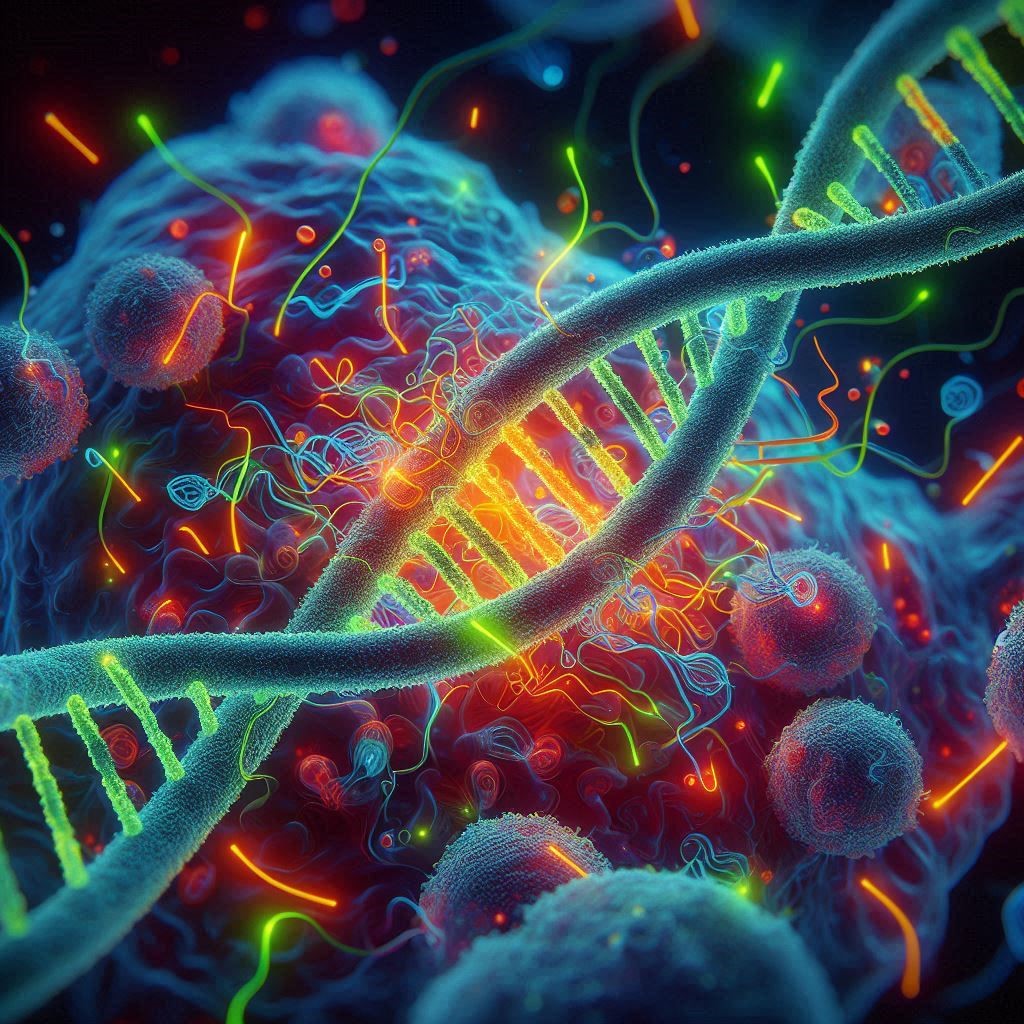Introduction to CRISPR Technology
The world of genetic modification is evolving rapidly, and at the forefront of this revolution is CRISPR technology. This groundbreaking tool has transformed how we understand and manipulate DNA, opening doors to possibilities once thought impossible. Among its many applications, CRISPR KO 3T3-L1 cells are gaining traction for their innovative approach to studying fat cells.
Imagine having the ability to edit genes with precision that resembles a word processor correcting typos. Researchers can now delve deeper into cellular mechanisms, specifically in understanding adipogenesis—the formation of fat cells—and their role in various diseases. As scientists explore these frontiers, they’re not just rewriting textbooks; they’re reshaping our future health outcomes.
Join us as we uncover the secrets behind CRISPR KO 3T3-L1—what it means for research today and what lies ahead in this fascinating field!
Understanding 3T3-L1 Cells
3T3-L1 cells are derived from mouse embryonic fibroblasts. They hold a unique position in biological research due to their ability to differentiate into adipocytes, or fat cells. This characteristic makes them vital for studying obesity and metabolic disorders.
When cultured under specific conditions, 3T3-L1 cells undergo a transformation process. They gain the capacity to store lipids and produce hormones like leptin. Researchers leverage this differentiation to explore how various factors influence fat metabolism.
Their robust growth characteristics make 3T3-L1 an ideal model for experiments involving genetic modifications. Scientists can manipulate these cells using tools like CRISPR technology, shedding light on gene functions related to adipogenesis.
Understanding these mechanisms not only enhances our knowledge of cellular biology but also paves the way for innovative therapies targeting metabolic diseases. The versatility of 3T3-L1 continues to captivate researchers across various fields.
The Potential of CRISPR KO 3T3-L1 in Genetic Modification
CRISPR KO 3T3-L1 cells represent a groundbreaking tool in the realm of genetic modification. These engineered cells allow researchers to precisely edit genes, opening doors to innovative studies in various biological processes.
The potential applications are vast. Researchers can target specific genes linked to fat metabolism and insulin sensitivity, which plays a crucial role in understanding obesity and diabetes. By knocking out these genes, scientists can observe changes that inform therapeutic strategies.
Moreover, 3T3-L1 offers insights into cellular mechanisms governing adipocyte differentiation. This knowledge could lead to advancements in treating metabolic disorders.
With its ability to streamline experiments and produce reproducible results, the platform enhances research efficiency dramatically. As techniques evolve further, the capabilities of CRISPR KO 3T3-L1 will likely expand even more significantly within genetic manipulation fields.
How CRISPR KO 3T3-L1 Works: Step by Step Process
CRISPR KO 3T3-L1 operates through a straightforward yet powerful mechanism. First, researchers design a specific guide RNA (gRNA) to target the gene of interest within the 3T3-L1 cells. This gRNA is crucial as it directs the CRISPR system precisely where to make edits.
Next, the Cas9 enzyme is introduced alongside the gRNA. The Cas9 protein acts like molecular scissors that cut DNA at the designated site. Once this cut occurs, cellular repair mechanisms kick in.
The cell attempts to fix its broken DNA but often makes mistakes during this process. These errors can lead to insertions or deletions in the genetic code, effectively knocking out or “KOing” specific genes.
This knockout allows scientists to observe how changes affect functions such as adipogenesis and metabolism within these cells, paving new pathways for research advancements and therapeutic developments.
The Role of CRISPR KO 3T3-L1 in Adipogenesis Research
CRISPR KO 3T3-L1 cells are revolutionizing adipogenesis research, a field focused on the formation of fat cells. These modified mouse fibroblast cell lines serve as an invaluable tool for scientists exploring how different genes influence fat development.
By utilizing CRISPR technology, researchers can knock out specific genes in 3T3-L1 cells to observe changes in differentiation and metabolism. This targeted approach allows for precise investigations into pathways that regulate lipid accumulation and insulin sensitivity.
Moreover, understanding these mechanisms is pivotal for addressing obesity-related disorders. Investigating gene function through CRISPR KO models offers insights into potential therapeutic targets.
As scientists continue to unveil the complexities of adipogenesis with 3T3-L1 models, they pave the way for innovative strategies against metabolic diseases that plague modern society. The future looks promising as this technology enhances our grasp of cellular dynamics in fat tissue formation.
Applications of CRISPR KO 3T3-L1 in Cancer Research
CRISPR KO 3T3-L1 cells are revolutionizing cancer research by providing insights into tumor biology and metastasis. Researchers use these genetically modified adipocytes to study the relationship between fat tissue and cancer development.
The ability to knock out specific genes allows scientists to observe how alterations affect cell behavior. This is crucial for understanding mechanisms that drive tumor growth in different environments, especially where adipose tissue plays a critical role.
Moreover, CRISPR KO 3T3-L1 can help identify potential therapeutic targets. By investigating gene functions within a controlled model, researchers can pinpoint vulnerabilities in cancer cells that might be exploited for treatment strategies.
Additionally, interactions between cancerous cells and their microenvironment become clearer with this technology. It opens doors for innovative approaches that combine obesity research with oncology, ultimately contributing valuable knowledge towards combating various types of cancers effectively.
Benefits and Limitations of Using CRISPR KO 3T3-L1
CRISPR KO 3T3-L1 offers remarkable advantages for researchers delving into genetic modification. Its precision allows scientists to target specific genes, enabling detailed studies on gene function and interaction. This specificity reduces off-target effects commonly associated with other gene-editing methods.
Moreover, the ease of use is a game-changer. Researchers can quickly design and implement experiments without extensive training in molecular biology techniques. The efficiency of CRISPR KO 3T3-L1 accelerates research timelines significantly.
However, challenges exist alongside these benefits. Potential unintended edits may still occur, raising questions about long-term consequences in modified organisms. Additionally, not all targeted genes yield clear results due to varying cell responses or environmental factors.
Ethical considerations also loom large over this technology. The implications of manipulating genetic material necessitate careful deliberation regarding safety and morality in research applications.
Ethical Concerns Surrounding Genetic Modification
Ethical concerns surrounding genetic modification are complex and multifaceted. As scientists unlock the potential of tools like CRISPR KO 3T3-L1, debates arise about the implications for human health and biodiversity.
One major issue is the unintended consequences of gene editing. Altering a single gene can have cascading effects on an organism’s biology, potentially leading to unforeseen health risks or environmental impacts.
Additionally, there are worries about equity in access to these technologies. Will they be available only to affluent nations or individuals? This disparity could widen existing gaps in healthcare and research benefits.
The question of consent also looms large, especially when it comes to germline modifications that affect future generations. Who gets a say in how genes are altered?
There’s always a philosophical debate regarding “playing God.” The moral boundaries of manipulating life at such fundamental levels remain hotly contested among ethicists and scientists alike.
Real-world Applications of CRISPR KO 3T3-L1
CRISPR KO 3T3-L1 cells are revolutionizing research in various fields. Their ability to facilitate gene editing allows scientists to study fat cell development and metabolism more effectively.
These modified cells help identify pathways involved in obesity and related diseases. Researchers can pinpoint crucial genes that influence adipogenesis, leading to potential therapeutic targets.
In cancer research, CRISPR KO 3T3-L1 offers insights into tumor biology linked with metabolic disorders. Understanding how alterations in fat cells contribute to cancer progression is vital for developing new treatments.
Furthermore, these genetic modifications can aid drug testing by providing a platform for evaluating the efficacy of anti-obesity medications. Real-world applications extend beyond academia; they hold promise for pharmaceutical companies looking for advanced solutions to pressing health issues.
The impact of CRISPR KO 3T3-L1 on biomedical research is profound and continues to expand across various disciplines.
Future Implications of this
The future implications of CRISPR KO 3T3-L1 are vast and exciting. As researchers continue to explore the capabilities of this powerful tool, we can expect significant advancements in our understanding of genetic modification.
One area where CRISPR KO 3T3-L1 could pave the way is personalized medicine. By utilizing these genetically modified cells, scientists may be able to develop tailored treatments for various metabolic diseases. This approach would enable a more effective strategy against conditions that involve adipocyte function.
Moreover, the insights gained from using 3T3-L1 cells could lead to breakthroughs in regenerative medicine. Understanding how specific genes influence fat cell behavior might enhance tissue engineering efforts and improve outcomes for patients requiring grafts or transplants.
Furthermore, as ethical discussions surrounding genetic editing evolve alongside technological advancements, regulations will undoubtedly change too. This ongoing dialogue will shape how CRISPR technology integrates into mainstream research and clinical practices.
In cancer research specifically, these developments hold promise for uncovering new therapeutic targets and improving treatment efficacy. The ability to manipulate genes within 3T3-L1 cells allows researchers greater control over their experiments—ultimately leading us closer to innovative solutions that address complex health challenges.
As we look ahead, it’s clear that CRISPR KO 3T3-L1 has opened doors we once thought were closed regarding genetic exploration and manipulation. Unraveling its secrets holds potential not just for science but also for humanity’s overall well-being moving forward.



